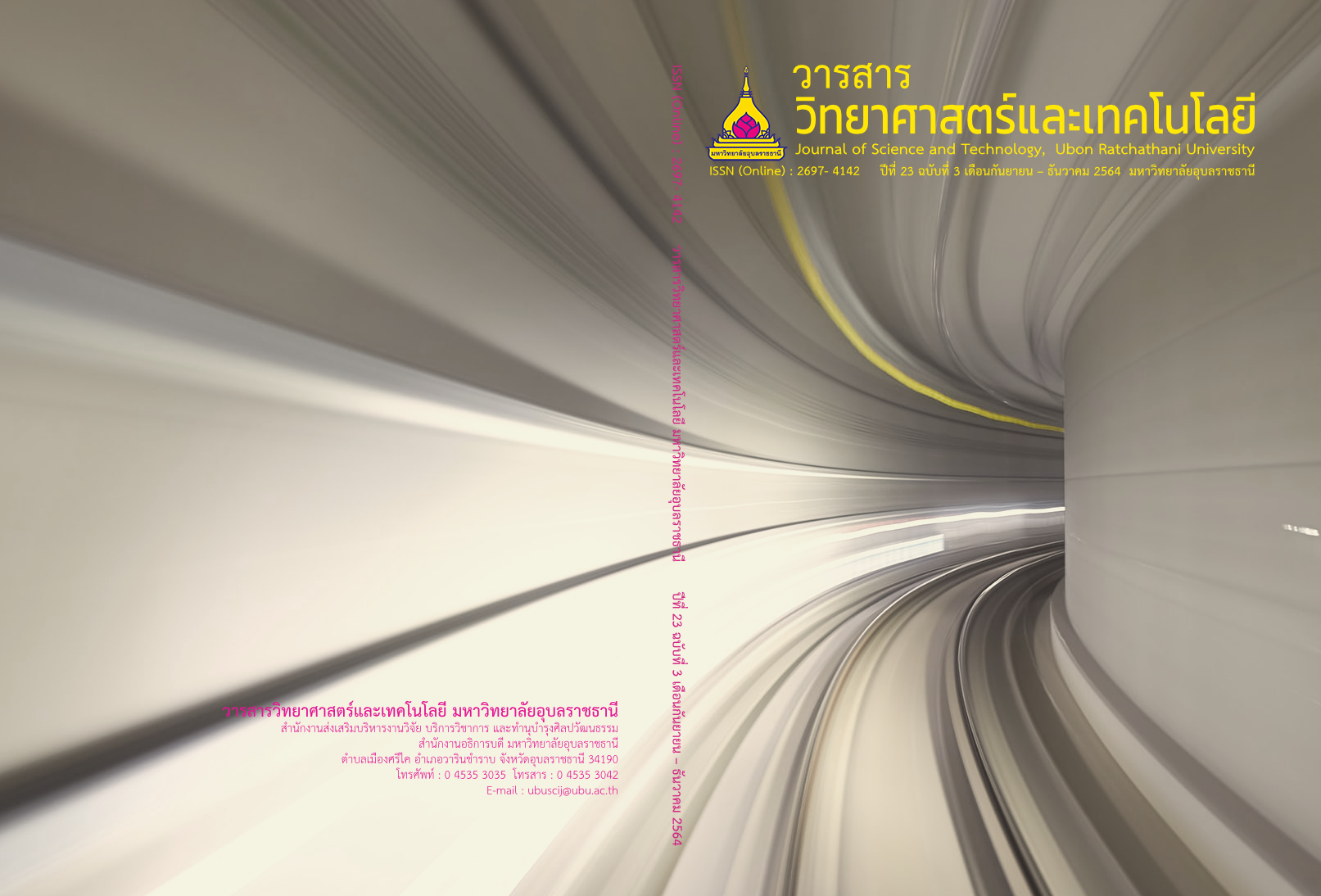Characteristics of Elderly Homeopathic Clients at Thai Traditional and Alternative Medicine Clinics, Sunpasitthiprasong Hospital, Ubon Ratchathani
Main Article Content
Abstract
This research aimed to study characteristics and symptoms of elderly homeopathic clients at Thai traditional and alternative medicine clinics, Sunpasitthiprasong hospital, Ubon Ratchathani. Quantitative and qualitative methods were used in this study. Data were collected from 1 - 30 August 2020. Descriptive statistics and content analysis were used. The results showed that there were 101 patients. Most participants were female (61.39%). The ages are from 60 to 84 years old. Most patients were in the age range between 65-69 years old (32.67%). The top three symptoms were arthro-myofascial (28.63%), sleep-related disorders (19.82%), and neurology (14.54%). The top four homeopathic remedies were Carcinosinum, Argentum Nitricum, Medorrhinum and Arsenicum album. The reasons to choose homeopathy as an alternative medicine were due to doctors’ advice and patients’ curiosity. For the outcome aspect, most of the patients felt better physically and mentally. In terms of physical improvement, patients had less pain, better movement and more self-reliance. In terms of mentally improvement, patients felt more refreshed. Patients, who have recovered or felt better, would recommend homeopathy.
Article Details
บทความที่ได้รับการตีพิมพ์เป็นลิขสิทธิ์ของ วารสารวิทยาศาสตร์และเทคโนโลยี มหาวิทยาลัยอุบลราชธานี
ข้อความที่ปรากฏในบทความแต่ละเรื่องในวารสารวิชาการเล่มนี้เป็นความคิดเห็นส่วนตัวของผู้เขียนแต่ละท่านไม่เกี่ยวข้องกับมหาวิทยาลัยอุบลราชธานี และคณาจารย์ท่านอื่นๆในมหาวิทยาลัยฯ แต่อย่างใด ความรับผิดชอบองค์ประกอบทั้งหมดของบทความแต่ละเรื่องเป็นของผู้เขียนแต่ละท่าน หากมีความผิดพลาดใดๆ ผู้เขียนแต่ละท่านจะรับผิดชอบบทความของตนเองแต่ผู้เดียว
References
Division of Complementary and Alternative Medicine. 2019. Complementary and Alternative Medicine 2019. https://thaicam.go.th/. Accessed 2 May 2021. (in Thai)
World Health Organization. 2019. WHO Global Report on Traditional and Complementary Medicine 2019. https://apps.who.int/iris/handle/10665/312342. Accessed 2 May 2021.
Department of Thai Traditional and Alternative Medicine. 2016. Practice Guideline For Thai Traditional and Alternative Medicine in Clinic. Nonthaburi: Department of Thai Traditional and Alternative Medicine. (in Thai)
Namrat, T. and et al. 2018. Satisfaction of the rehabilitation stroke patients on the services of homeopathy as an alternative medicine at Sunpasitthiprasong Hospital, Ubon Ratchathani. Isan Journal of Pharmaceutical Sciences. 14(4): 38-49 (in Thai)
Jaruwanchai, P. and et al. 2015. Characteristic of patients using alternative medicine in public hospitals. Journal of Graduate Studies: Valaya Alongkorn Rajabhat University. 9(2): 73-84.
Mathie, R.T. and et al. 2017. Randomised, double-blind, placebo-controlled trials of non-individualised homeopathic treatment: systematic review and meta-analysis. Systematic Reviews. 6(1): 63-63.
Mathie, R.T. and et al. 2018. Systematic review and meta-analysis of randomised, other-than-placebo controlled, trials of individualised homeopathic treatment. Homeopathy. 107(4): 229-243.
Nelson, D.H. and et al. 2019. The bell tolls for homeopathy: time for change in the training and practice of North American naturopathic physicians. Journal of Evidence-Based Integrative Medicine. 24: 2515690x18823696.
Mathie, R.T. and et al. 2019. Systematic review and meta-analysis of randomised, other-than-placebo controlled, trials of individualised homeopathic treatment. Homeopathy. 108(2): 88-101.
Terry, R., Perry, R. and Ernst, E. 2012. An overview of systematic reviews of complementary and alternative medicine for fibromyalgia. Clinical Rheumatology. 31(1): 55-66.
Perry, R., Terry, R. and Ernst, E. 2010. A systematic review of homoeopathy for the treatment of fibromyalgia. Clinical Rheumatology. 29(5): 457-64.

